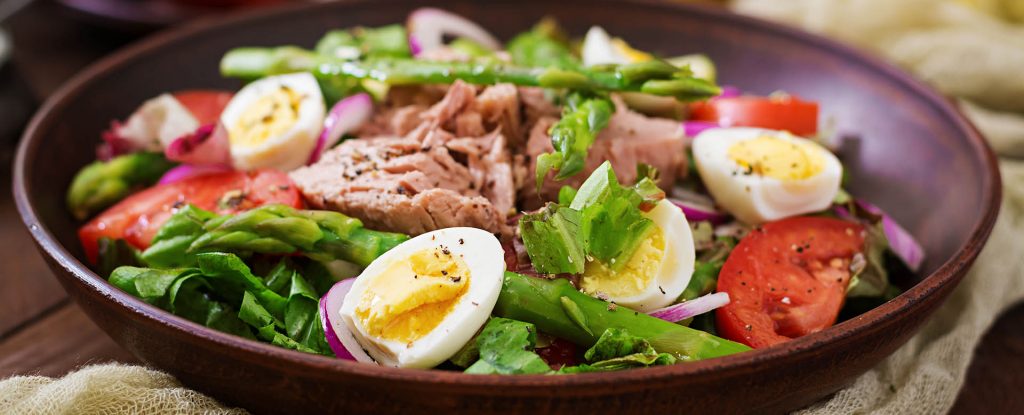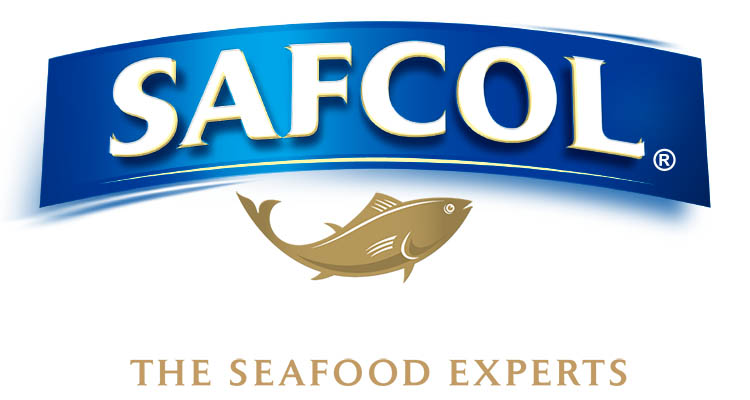OMEGA-3
Omega-3 fatty acids are important fats that you must get from your diet. As your body cannot produce them on its own, you must get them from your diet. Common foods that are high in omega-3 fatty acids include fatty fish, fish oils, flax seeds, chia seeds, flaxseed oil, and walnuts.

What are OMEGA-3s?
Omega-3 fats are a type of polyunsaturated fat that helps to reduce your risk of heart disease. Omega-3 fatty acids can come from a variety of sources. The best source of long-chain Omega 3-s come from fish. The Heart Foundation recommends 2–3 serves of fish per week and why it is a must-have on your grocery list today.
Marine sources of Omega-3 fatty acids
Docosahexaenoic acid (DHA) and eicosapentaenoic acid (EPA) are omega-3s that are found primarily in oily fish such as Atlantic salmon, canned salmon and tuna as well as barramundi, trout, mackerel and canned sardines. They are some of the richest natural sources of Omega-3.
What are the benefits of OMEGA-3?
Scientific evidence supports the role of long-chain omega-3s EPA and DHA, in the healthy development and function of the brain, eyes and heart. DHA is highly concentrated in the brain and retina of the eyes. This is vital for brain health and critical for visual function. EPA is believed to be important for maintaining healthy blood vessels and for heart health, moderating inflammation in the body, and can contribute to controlling high blood pressure, may protect against cancer, improve your mood and alleviate depression.
How much OMEGA-3 do I need?
The Heart Foundation recommends, for the adult population, consuming about 500mg of omega-3 (marine source) every day. While marine sources of omega-3 are already in the form of EPA and DHA, plant sources of omega-3 must be converted in the body to form EPA and DHA before they can be utilised. This process requires other nutrients in the process, and higher amounts of plant-based omega 3s may be needed in order to get the same amounts of EPA and DHA as marine sources.
On some days you may consume more or less omega-3s than on other days but aim to consume about 3500mg of marine-sourced omega-3 over the whole week.
The Heart Foundation recommends that you achieve this amount by eating two to three 150g serves of oily fish every week and supplementing your intake with fish oil and/or foods and drinks enriched with omega-3 fatty acids. There are great recipe ideas to boost your Omega-3 intake in our recipe section.
Other sources of OMEGA-3s include:
Omega-3 animal sources:
Docosapentaenoic acid (DPA), along with smaller amounts of EPA and DHA, is naturally found in animal products, such as free range eggs, chicken and beef.1
Omega-3 plant sources:
Alpha-linolenic acid (ALA) is derived from plants and is found mainly in fats and oils, such as canola oil and soybean oil, and also in linseeds (flaxseeds) and walnuts.1
1. Heart Foundation Q&As on Omega 3s for the general public © 2008 National Heart Foundation of Australia ABN 98 008 419 761
To find out more about sources of omega-3 refer to the Heart Foundation resource Sources of omega-3 (PDF).









